Student Blog
Liz

Week 1 of Level 2 Fieldwork: COMPLETE! ⟩
January 18, 2021, by Liz
After a nice (and much needed) winter break, I was super excited to get back and start my first level II fieldwork. Don’t get me wrong, enjoying a nice cup of hot cocoa and binge watching Netflix was awesome! But, knowing that I would be completing my first level II in a hand therapy setting was so exciting. However, the pandemic definitely made me nervous to be back. But, I have to say I am absolutely in love with my site.
It is far from any ordinary hand therapy clinic! My site is a little bungalow right along the beach. It was once someone’s home in the 70s, then a craftsman’s shop, and now it is a homey place where people can come in for occupational therapy. I can see the ocean from the window — talk about a view! The OT that owns the clinic has also created a station out front on the porch which has been great for getting some fresh air. The clients really love it.
I spent the first two days getting familiar with the clinic and shadowing my fieldwork educator. By day 3 I was already helping out with some of the modalities such as ultrasound, paraffin, and ice massage (under appropriate supervision of course!). I also got a chance to try scar mobilization and also take some measurements. I have to say this first week has confirmed that I learned SO much in the hands electives. As Lisa Deshaies mentioned in our hand rehab course — anatomy is KEY. I really got a chance to see and understand what she meant this first week.
I also got a chance to see a bunch of different diagnoses such as Dupuytren’s contractures, swan neck and boutonniere deformities, trigger fingers, De Quervain’s tenosynovitis, and of course clients with rheumatoid and osteoarthritis — to name a few. We talked about a few of these in class, but it was great to be able to see them in person and also get a chance to feel people’s hands. We use gloves when doing so, but even through the use of gloves I have been able to feel the difference from person to person.
Overall, I was surprised by how much I knew! I definitely have more to learn, and I’ve established a few goals with my fieldwork educator. This week he wants me to help with a couple of evaluations. I am nervous, but looking forward to applying what I’ve learned about evals and also getting some feedback on how to improve. Wish me luck!
⋯

Working with the Community ⟩
December 21, 2020, by Liz
In one of my previous blog posts I shared a little bit about the community program that my colleague, and one of my dearest friends, Stephanie and I are leading together. The program is called Vivir Con Diabetes, and was initially developed by another occupational therapy student, David, as a part of the Albert Schweitzer Fellowship. In efforts of continuing the program, he mentored our very own Daniel Padilla, who then continued running the sessions the following year in collaboration with his colleague, Ceci. As you may all know, Daniel is now an OTD student and taking on other things as he works towards becoming Dr. Padilla. His colleague Ceci is also working on obtaining her OTD and is busy as she completes her residency at CHLA’s UCEDD. So now this year, Stephanie and I are running the program’s sessions.
To give you all more background, Vivir Con Diabetes is a program designed to support the Spanish-speaking community of Boyle Heights as they strive to make lifestyle changes in order to improve their diabetes management. Our goal is to implement culturally sensitive interventions as we support them in achieving their goal of better managing their diabetes. Our program site is the LAC+USC Wellness Center, which our participants are very familiar with because they utilize some of their other resources. I get a lot of questions from prospective students like “What kind of work do you get to do directly with the community?” “What are other ways to stay involved besides student organizations on campus?” “What kind of work do you directly get to do with the Latinx community?” Well, this is one of those ways in which I stay connected with my community all while using an OT lens.
Normally these sessions are held in person, but given the current situation we have been hosting them online. There are three sessions that take place Saturday mornings and are each 45 minutes long. It sounds like a long morning, but they really fly by! As we were discussing what we would be covering during the sessions and how they would be structured we had a few things to think about: would everyone that was interested in joining our classes have access to the internet? A computer? A cell phone? We really got to think about how much of an impact COVID-19 has had on our community, especially those who would come in-person to the Wellness Center with the goal of learning more about how to be more directly involved in their own health and care. Most of our participants tune in using their cell phones. Because Stephanie and I log in using our laptops, we had to learn a little more about how to instruct and guide our participants to unmute/turn their cameras on/off on their phones.
Stephanie and I touch on different topics every week and make sure that we relate them back to our participants’ diabetes management. We talk about things like:
- Sleep hygiene
- Chronic pain
- Stress management
- Physical activity — two weeks ago we did Zumba for 20 minutes, which was a hit!
- Communicating with one’s provider
- Mental health
These are just a few of the topics we cover, and as I mentioned before we always tie the topic back to diabetes management. For example, how does the stress created by family members and your provider affect your ability to manage your diabetes? How does the pressure of keeping your A1c levels low affect how you feel about yourself? How does it affect your relationships? Because our participants are Spanish-speaking and there’s already a low number of Latinx providers that they can relate to, our participants really love to share and talk to a group of people that understands — people that they can relate to.
I should mention that Stephanie and I aren’t just creating these lessons off the top of our heads! We get feedback from Dr. Diaz on our session outlines every week before introducing any content to our participants. Which brings me to my next point — mentorship. Aside from being able to work with the community, participating in this program has provided me with some great mentorship from Dr. Diaz. He continuously supports Stephanie and I by meeting with us on a weekly basis to go over our session outlines, any challenges we faced at our sessions, and also shares a ton of resources with us!
All in all it’s been such a great experience to be a part of this program. It’s something that I wish would have been available to help my grandmother with her diabetes management, and something that I think really makes a huge difference for our community in general. Speaking from my grandmother’s experience, she didn’t quite understand what it meant to have diabetes, didn’t know that there were so many lifestyle changes that could have helped her manage it, and also didn’t really feel comfortable asking her provider questions because she didn’t speak English. So, I am really passionate about supporting my community in any way possible.
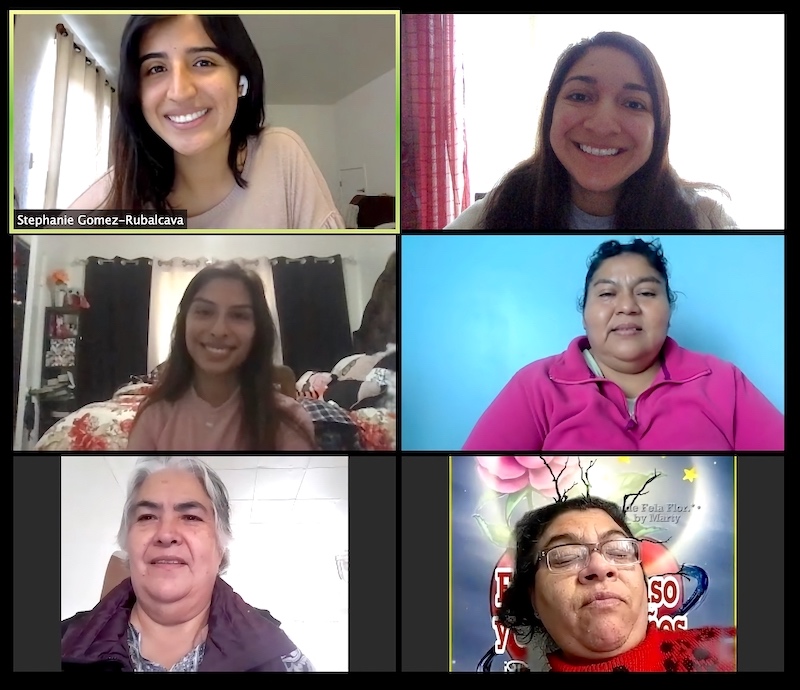
This past week was our last week of sessions for the semester. Here we are with some of our lovely participants from the 9 AM session! This photo was shared with participants’ permission.
I hope this was helpful for learning more about other ways in which you can stay involved and make a difference in the community. Please feel free to reach out to me if you have any questions about the program or about the Albert Schweitzer Fellowship! I would be happy to walk you through that application if you’re interested in applying for the following year. Fight on and happy holidays!
⋯

My Work as a Student Ambassador Part 1 ⟩
December 3, 2020, by Liz
Ever since I attended my first information session for USC’s OT program being a student ambassador seemed so cool! My interest in applying for a position was largely influenced by how great my experience was with my assigned student ambassador, Melissa. I appreciated how approachable she was and how willing she was to answer any questions I had. She responded to my emails very promptly and overall made me feel very supported as I waited to begin my first summer session.
The opportunity to apply for the position presented itself my first year during the spring semester. One of my favorite professors of all time, Dr. Celso Delgado Jr., told me about the position and encouraged me to apply. So, I went for it! It was definitely nerve wrecking because many of my peers were also applying, all whom I thought were also great candidates. After a bit of waiting, I was lucky enough to find out I was one of the students who had been selected. Woo!
Being a student worker through this position has been challenging, but manageable. This fall I worked 10 hours a week, but luckily because of everything being remote I was able to complete a few of my hours over the weekend and later on in the day. This position has also challenged me to stay organized. I have had to make sure to prioritize my school work, get work done for my fellowship, and also balance my personal life on top of working on my student ambassador duties. It’s been difficult at times, but I am grateful to have a wonderful team to lean on when I need help.
Every member of our team takes the lead on different projects, but we all work together as one to make sure our goals are met. Here’s a little bit of what I’ve done so far:
1. Write blogs!
Part of what I do is share my experiences as an OT student by writing blog posts. Our entire team does it! This is an awesome way for people who are interested in our program to learn about different people’s experiences and to connect with those whom they feel may have experienced similar challenges (e.g., being waitlisted, first-gen students).
2. Attend/assist during information sessions
You may have seen some of us if you’ve attended an information session before. Part of what I do is attend these sessions to answer questions as they relate to the student experience for students who are interested in applying for our program. It’s always so fun getting to know all of you!
3. Connect with current and prospective students
You may have also seen us on our website — we’re here for you! I stay in touch with current students to answer any questions they may have about certain classes/electives, how to best prepare for exams for classes I’ve taken before, or simply to listen and support during stressful times during the semester. I also stay in touch with prospective students to support them as well. My goal is to make prospective students feel welcome and provide guidance as they apply for our program!
4. Get OT’s name out there at grad fairs
Another thing that I do is attend different grad school fairs. At these fairs I present on our program and get OT’s name out there. Sometimes students who are already interested in OT attend, but students who have no idea what OT is will also come to our booth to hear more about it. My goal here is to convert the whole world into future occupational therapists! Just kidding, or am I? During these presentations I also share about my personal journey to finding OT. I answer different questions students have about occupational therapy/occupational science, about our program, about my experience as a first-generation, underrepresented student, etc. You name it, and I will answer it!
5. Support admissions
As you may know, the deadline to apply to our Entry-Level Professional Master’s Program just recently passed. We get hundreds of applicants, which means the admissions team has a lot of applications to read through as they decide who will be admitted. So, something I’ve done this year is help make that process a little easier for them. I’ve helped put together student applicant files, so that when admissions goes through to read everyone’s application everything can be ready and organized for them.
6. Bring new ideas
This year I’ve been able to add my own twist to presentations. Continuing to diversify our program is something that I am really passionate about. With that said, I began brainstorming on how this could continue to be done in new ways. An issue that I identified that many first-generation, underrepresented students face is that they simply don’t know about OT at all. For example, they may not have family members that work as/with OTs and they may not have access to or have ever received services from an OT.
I decided that I wanted to find a way to reach out to younger students to expose them to OT and to also serve as an example of someone who has been able to make it to grad school. When I was a younger student I definitely didn’t see grad school in my future for various reasons. So, I decided to collaborate with the AVID program at different LAUSD schools. If you’ve never heard of AVID, it is a program that supports first-generation students, many of whom are low-income, during their journey to obtaining a higher education. As a previous AVID student myself, I thought this would be a great way to reach out to younger students! I am happy that I have been able to bring new ideas to the team as we continue to work towards diversifying our program.
I hope this has given you all a brief glimpse into what I have done so far as a student ambassador. I decided to call this part 1 because the year is not over yet — stay tuned for part 2! As always, if there’s any questions you may have about my position as a student ambassador or anything at all please feel free to send me an email. Fight on and happy holidays to you all!
⋯

Meaningful Occupations in the Reinberg-Rivera-Ritter Household ⟩
November 12, 2020, by Liz
As OT students it’s so easy to get caught up with work, class assignments, and other responsibilities. It’s so easy that we forget how important it is to take care of ourselves and take some time to engage in meaningful occupations! This year I have had the pleasure of living with two of my best friends, Lorelei and Renee. Over the course of being in this program, we’ve really gotten to know each other. I don’t know what I would do without them! I thought it would be cool to share some pictures of some of the meaningful occupations we’ve been engaging in to relieve some stress and spend some time together as a family.
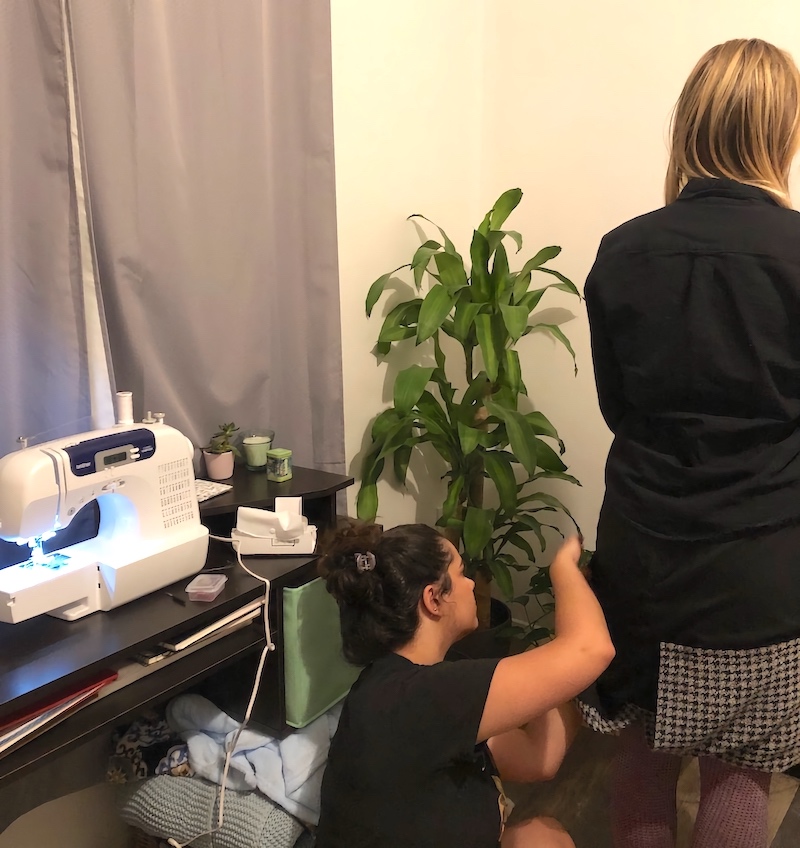
Renee just recently got a sewing machine, and so of course Lorelei put her to work! Here she is attempting to professionally hem Lorelei’s skirt. So yes, we now have our very own seamstress in the house! The only downside is that her work may take more than 10 business days to complete.
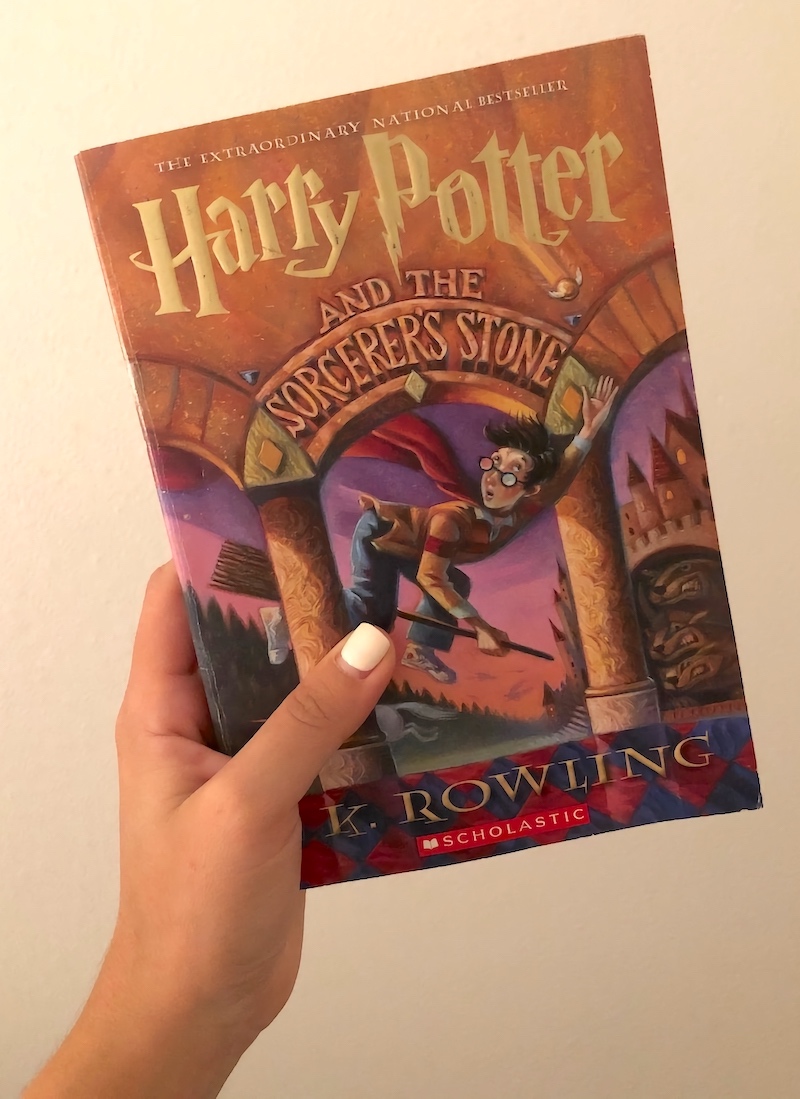
As a kid, I used to love playing outside with my friends. Whenever I think about my childhood I think about running around the apartment complex and racing around in scooters with my friends. My elementary school used to have a thing called AR (not sure if that is still a thing), in which we would have to accumulate a certain number of points by reading books. I really did not like reading books as a kid because I loved being outside playing with my neighbors. As I got older reading became more enjoyable of course. So, now I have decided to read the entire Harry Potter series, which I never read as a kid!
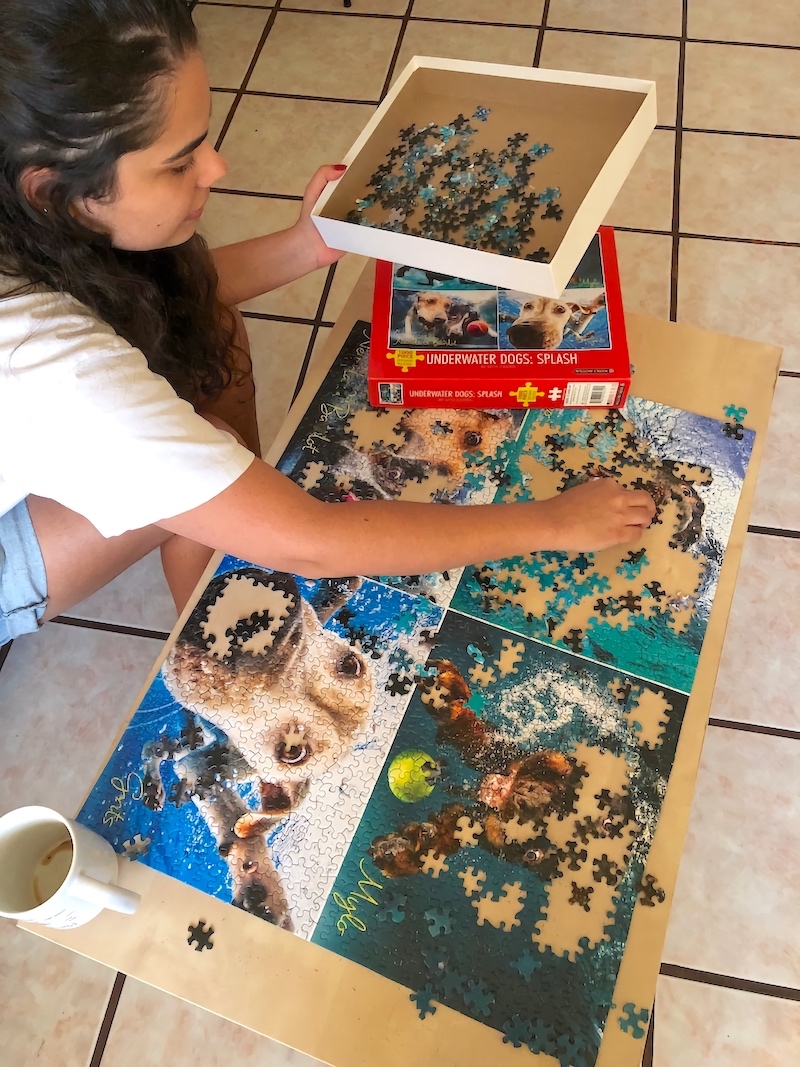
Here’s Renee taking a little study break. We started working on a 1,000 piece puzzle as a household, but I have to admit most of the work was done by Lorelei and Renee. There are way too many shades of blue, green, and white in there. I did cheer them on from the couch, though!
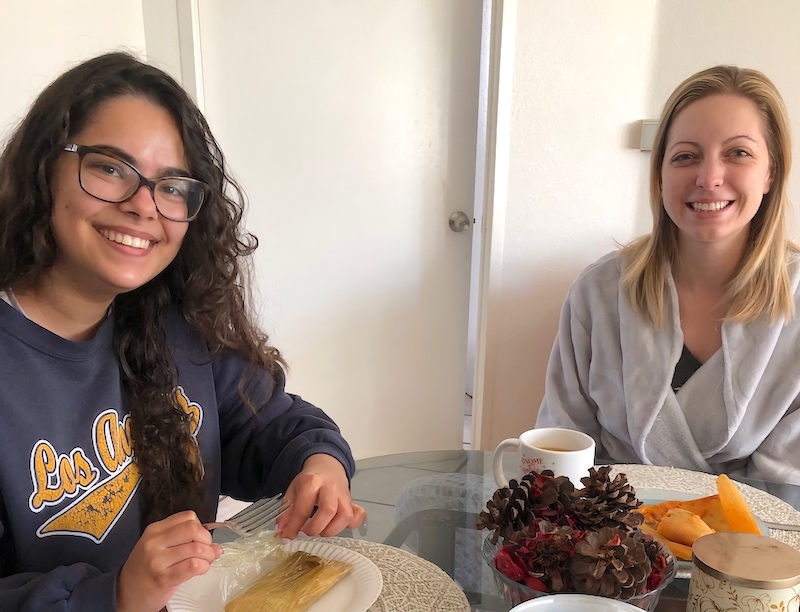
One of the most beautiful parts of living in East Los Angeles — delicious food everywhere! I woke up early before class to buy us some tamales so we could enjoy a little breakfast. Yum!
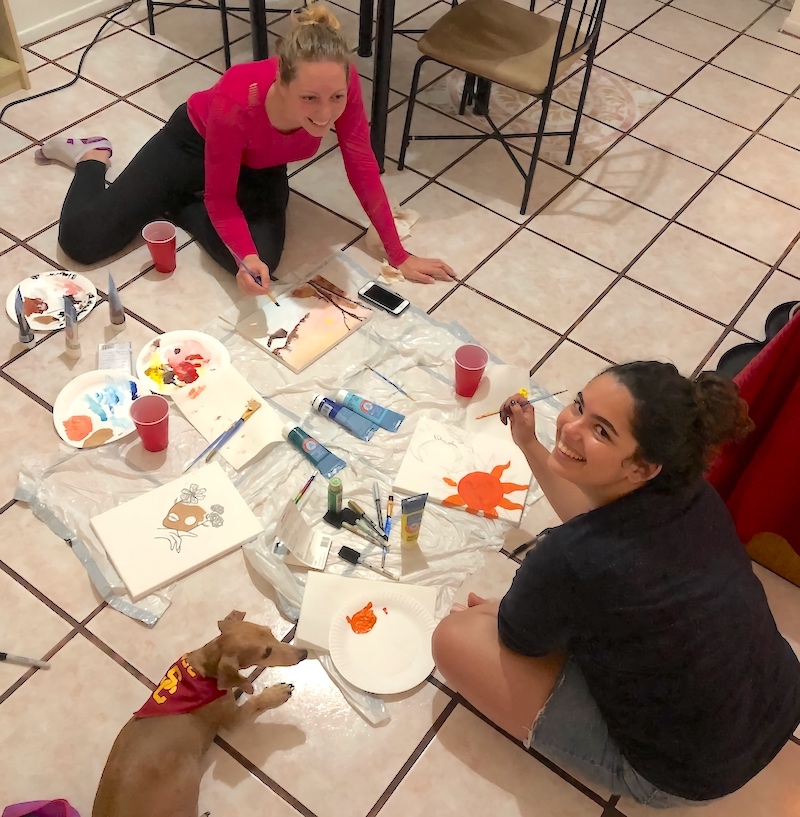
And lastly, here we are enjoying a little paint night! Lorelei was painting something for her mom, I was painting a gift for my little sister’s birthday, and Renee was painting something for her room. We were playing holiday music because both Renee and Lorelei will be going back to the east coast for the holidays. And Maxy is supervising of course.
These pictures bring me so much joy! I am so lucky to have the best roomies in the world. As an OT student in our program you can expect to receive a great education and learn from some of the best OTs out there. But, you can also expect to develop beautiful friendships with some amazing people!
⋯

A HANDful of Fun in Hands Electives ⟩
October 29, 2020, by Liz
The end of the semester is approaching, which means it’ll soon be time to wave goodbye to the best electives ever! Okay, yes I am biased because I really do love hands and hand therapy. I was initially pretty bummed about having to complete these electives via Zoom because I was nervous about not being able to do a lot of hands on work. No pun intended! But, I am happy to say I was proven wrong. I’ve had a blast learning in both OT 573: Hand Rehabilitation and OT 562: Advanced Hand Rehabilitation and Certification (PAMs).
Lisa Deshaies is the instructor for OT 573, and I have learned so much. We’ve learned about the anatomy of the hand, which I have to admit was really intimidating to think about at first! Lisa does a wonderful job of going over the anatomy of the hand and has some wonderful tips on how to remember different parts. In her class we’ve also learned about several different diagnoses, such as osteoarthritis, arthritis, and carpal tunnel syndrome to name a few. We’ve discussed the importance of wound care and the different phases of healing. We’ve talked about different orthoses and have had the opportunity to critically think about which orthosis we would recommend given different client cases. Lisa has shared so many resources with us to continue practicing our knowledge of anatomy and is so patient when explaining different concepts in class. This week we had our first in-person course, where we practiced casting. It was so much fun! I had seen this done at the hand therapy clinic I worked at, and I finally got to try it. Here’s some pictures!
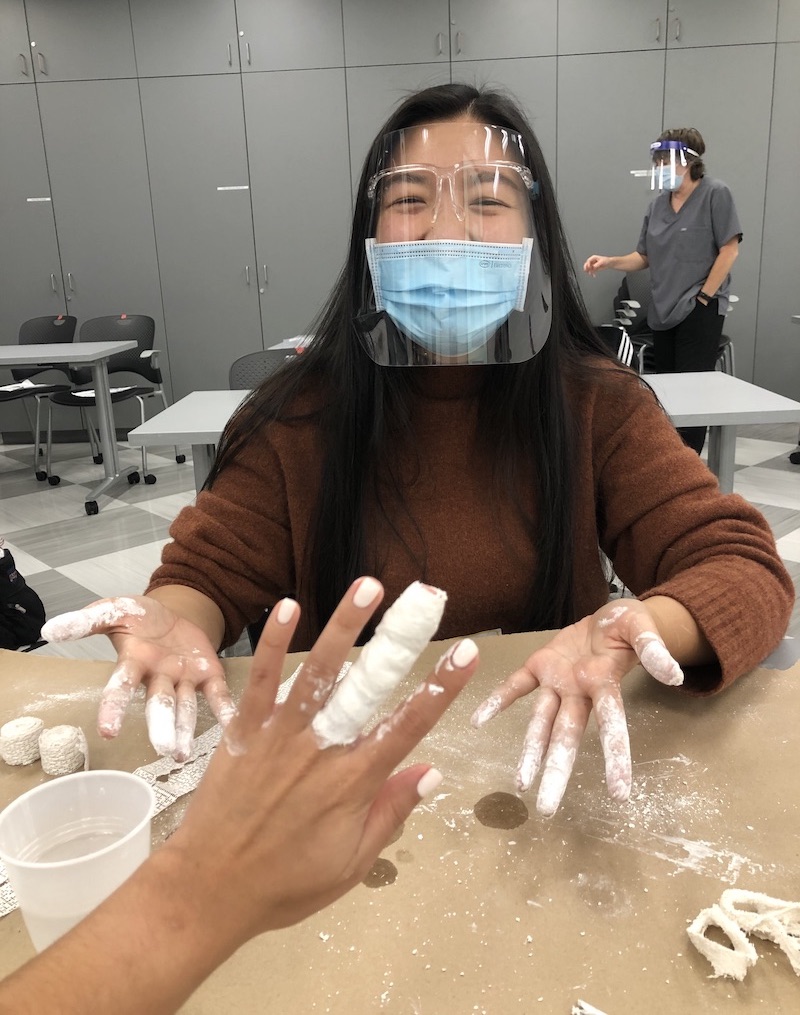
My partner and MA II student, Bethany, made a pretty awesome cast on my finger!
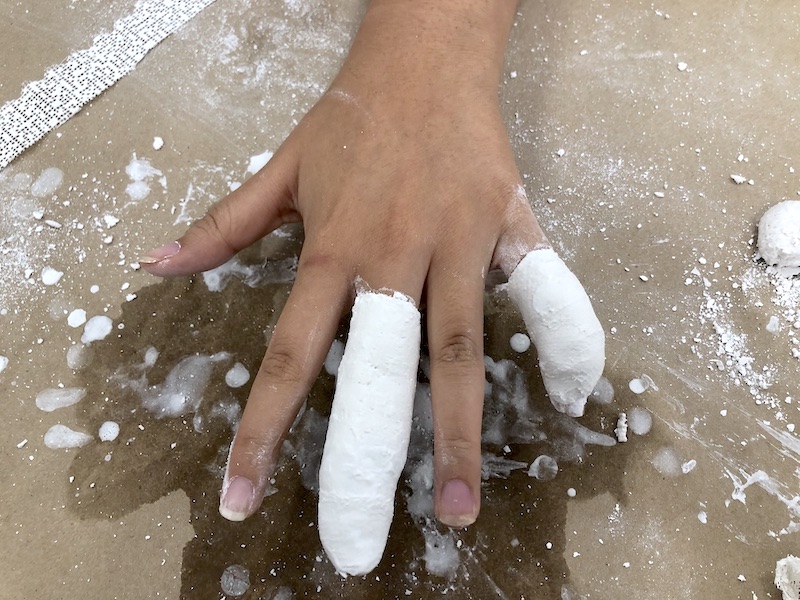
My attempt at casting Bethany’s fingers. It was fun to get a little messy and practice!
In OT 562 we’ve learned about a multitude of physical agent modalities that may be used in hand therapy practice. We’ve learned about ice/ice massage, hot packs, ultrasound, transcutaneous electrical nerve stimulation (TENS), neuromuscular electrical stimulation (NMES), paraffin, iontophoresis, and phonophoresis. Aside from learning about the modalities from our instructor, we’ve had a chance to learn from each other. Each student has had a chance to become familiar with one of the modalities I listed and presented during our small groups. We’ve learned about the precautions and contraindications, parameters, and when/why we would use the modality with clients. Dr. Rocker is extremely knowledgeable and has challenged us with multiple case studies that allow for us to critically think about which modality, if any, we would use in different cases. Some of the cases presented in class are cases that Dr. Rocker has seen in practice, which is really cool! We’ve had class on campus to try out ultrasound (sorry, I forgot to take some pictures!). We also had TENS/NMES units mailed to us from the Division, which we’ve had a chance to try out during class. It was a really cool experience to know what the modality feels like, and how it would be beneficial for certain clients. A little class fun this week included dressing up for Halloween. I really appreciated that Dr. Rocker continues to try and make class fun for everyone even though we aren’t on campus as we would usually be.
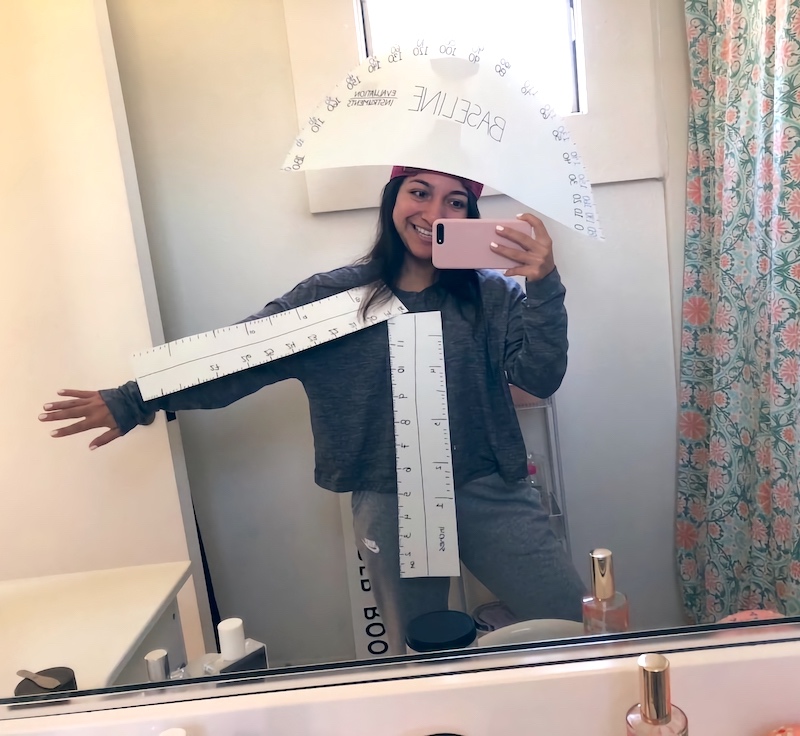
Check out my costume — I am supposed to be a goniometer!
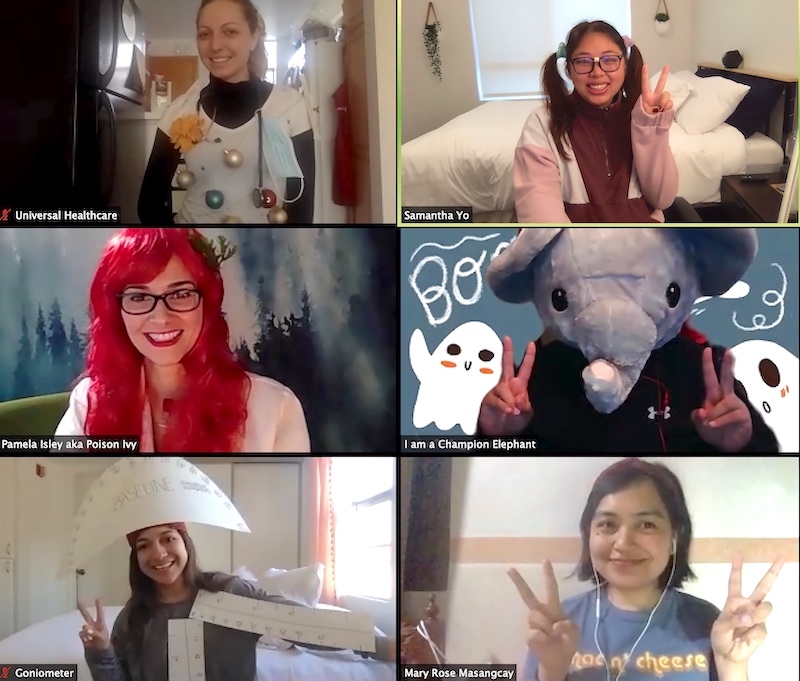
The lovely Trojans I’ve been working with in PAMs all semester showing their Halloween costumes!
If you’re as passionate about hands as I am, you’ll definitely get so much out of these two electives. The content is extremely relevant to hand therapy practice. If you’re interested in becoming certified in PAMs, CBOT requires a minimum of 30 educational hours and 240 supervised hours of PAMs training. The PAMs course counts towards 33 educational hours — so, you would be done with that part! All that’s left to worry about is obtaining the direct training in PAMs, which you could start accumulating hours for when out in practice as a certified OT. Pretty awesome!
⋯





